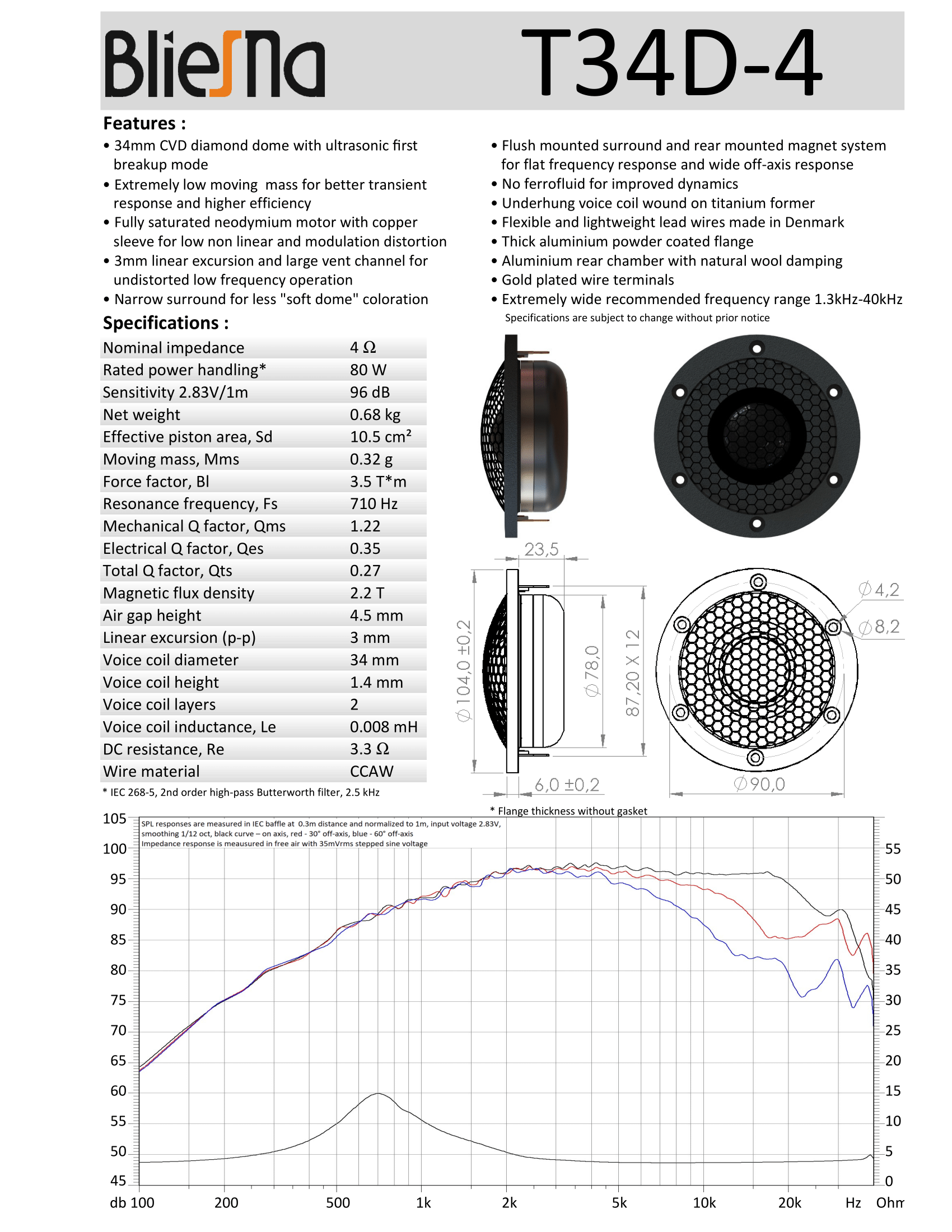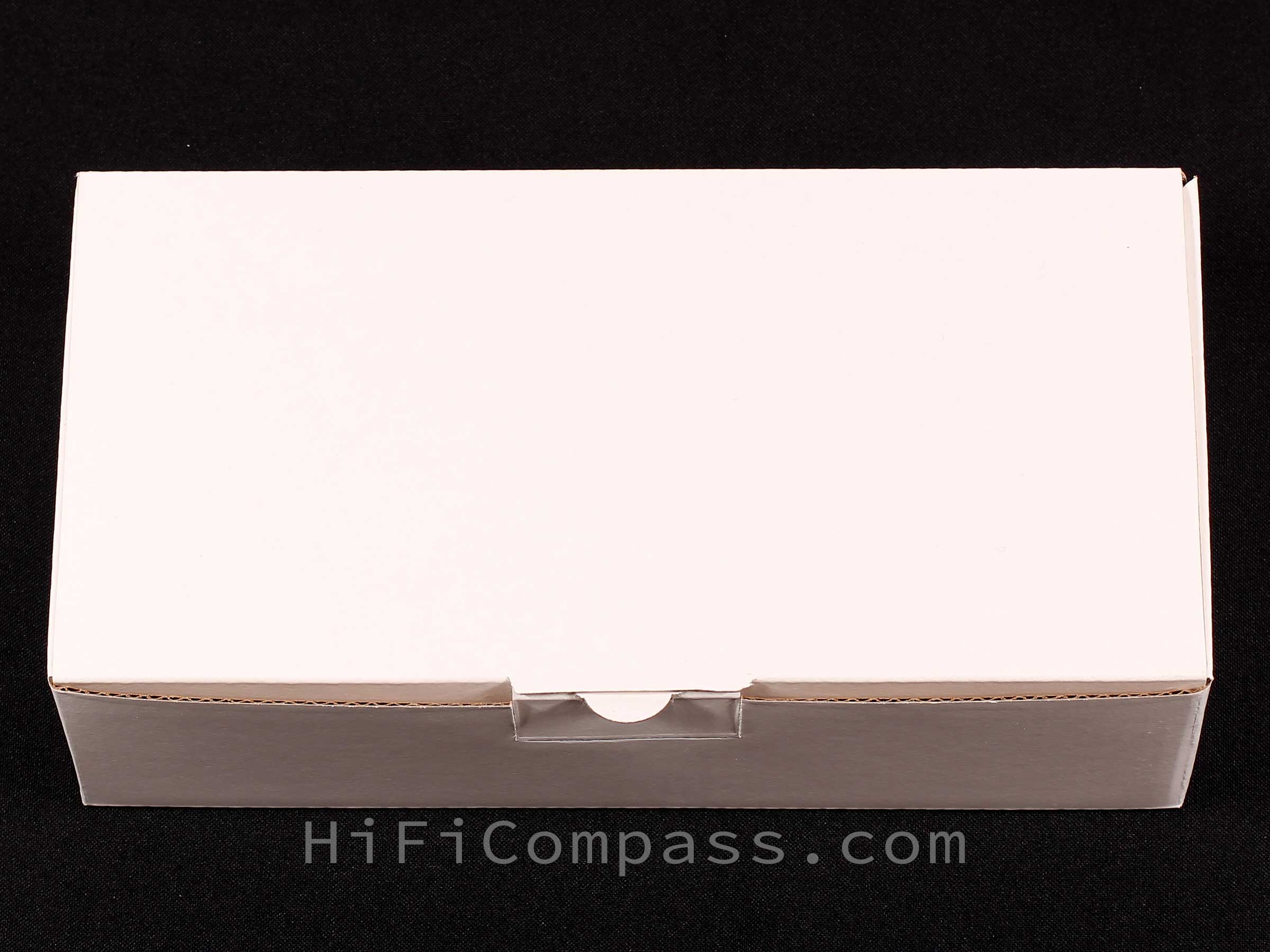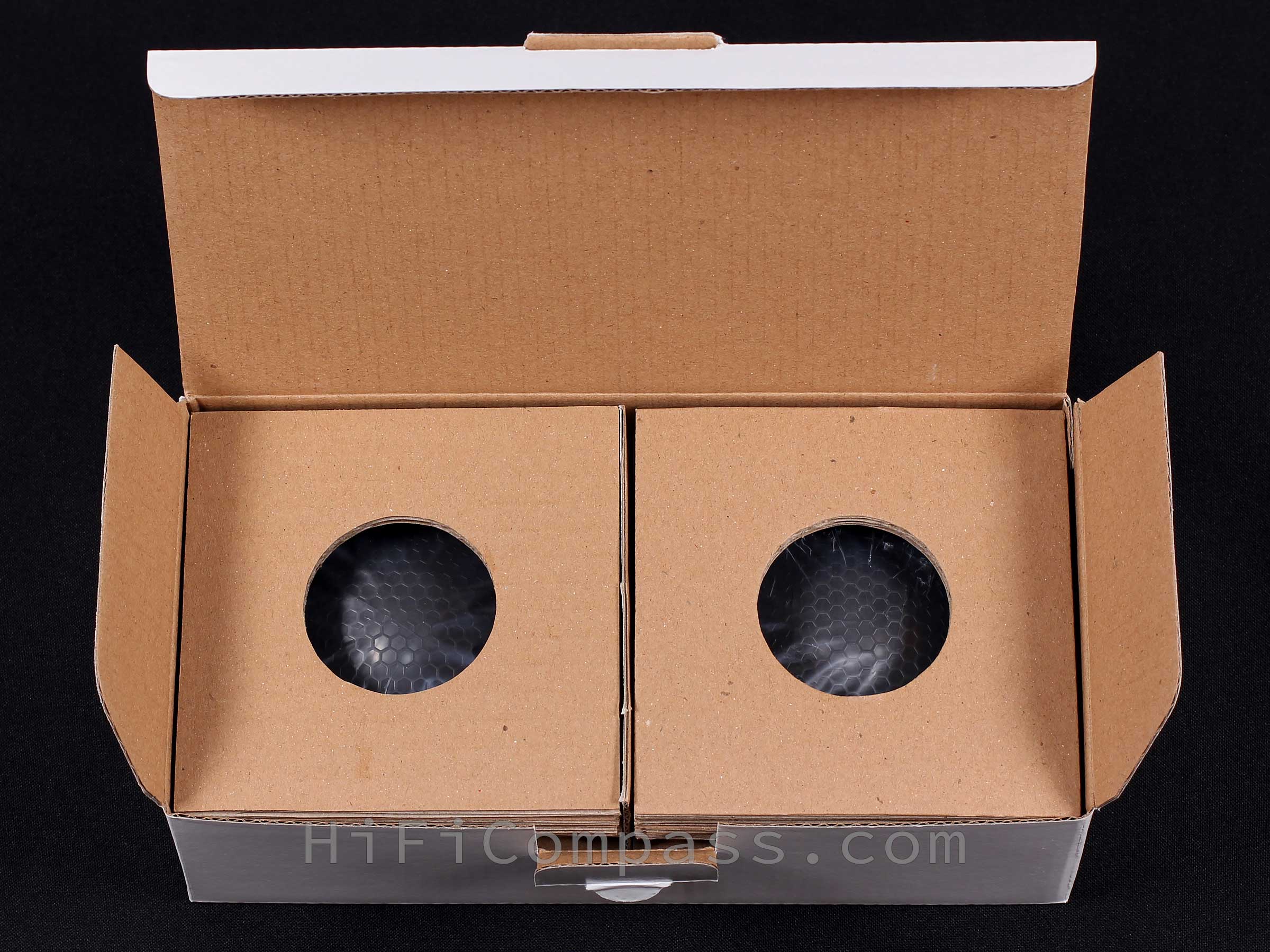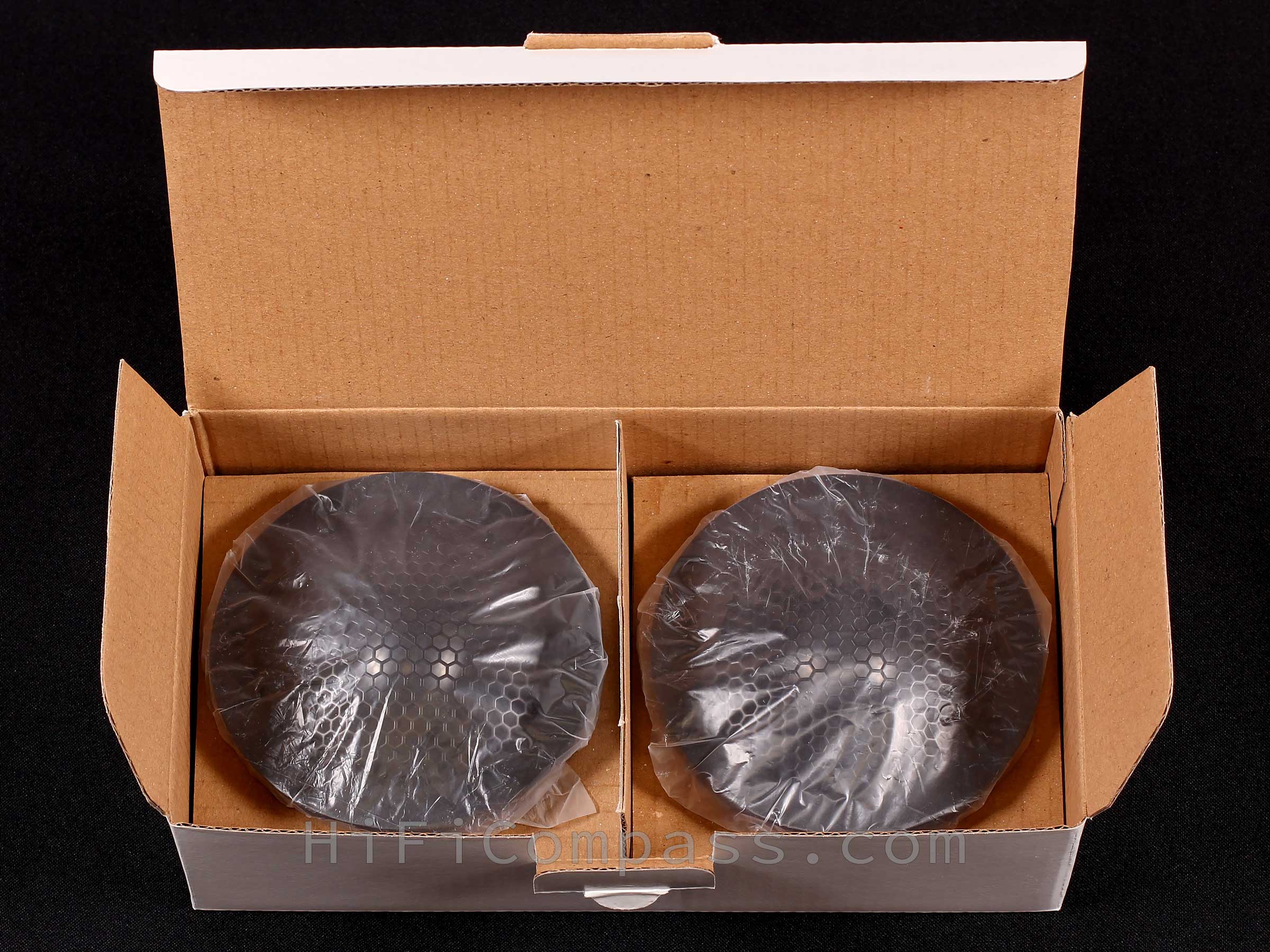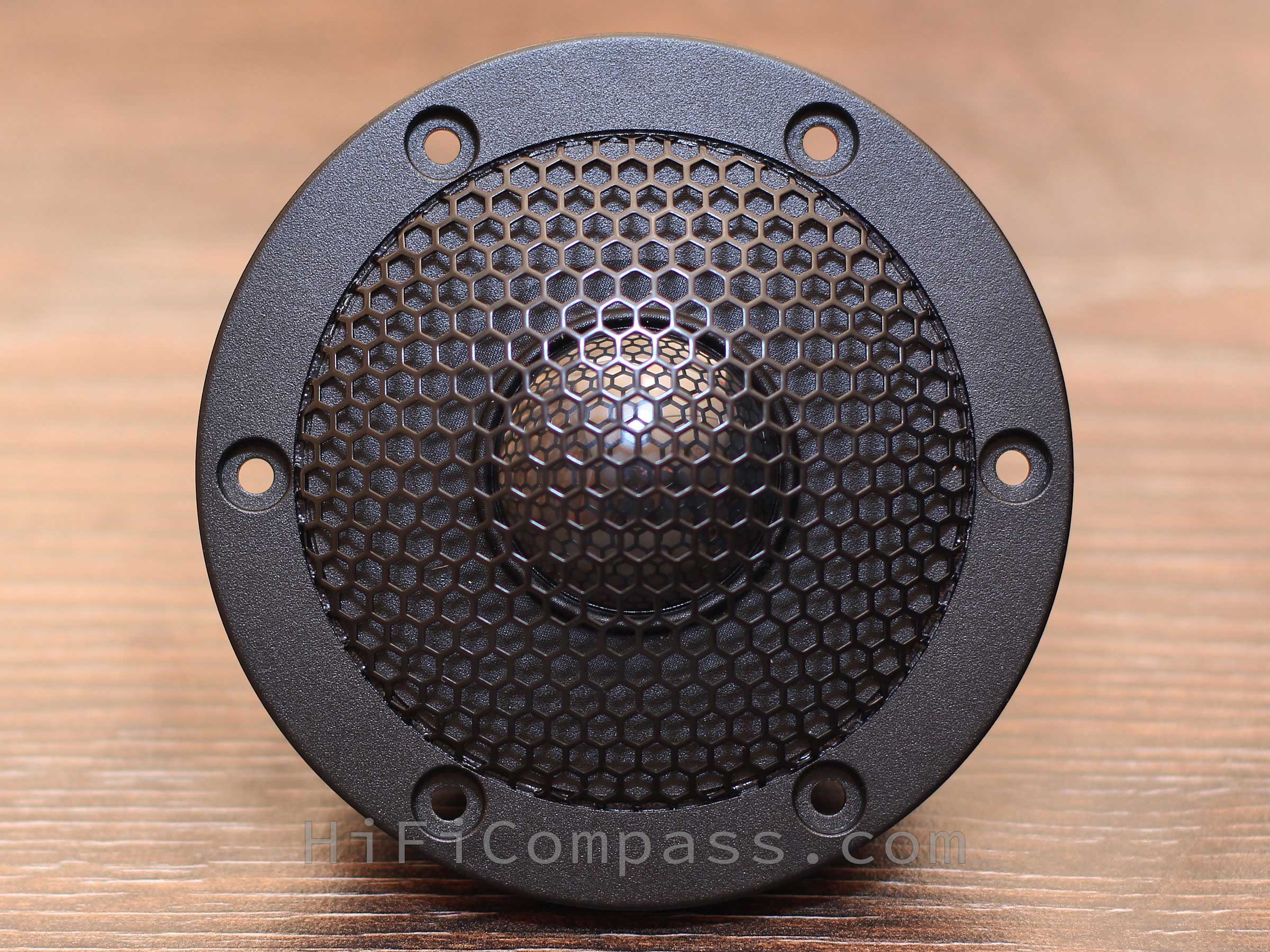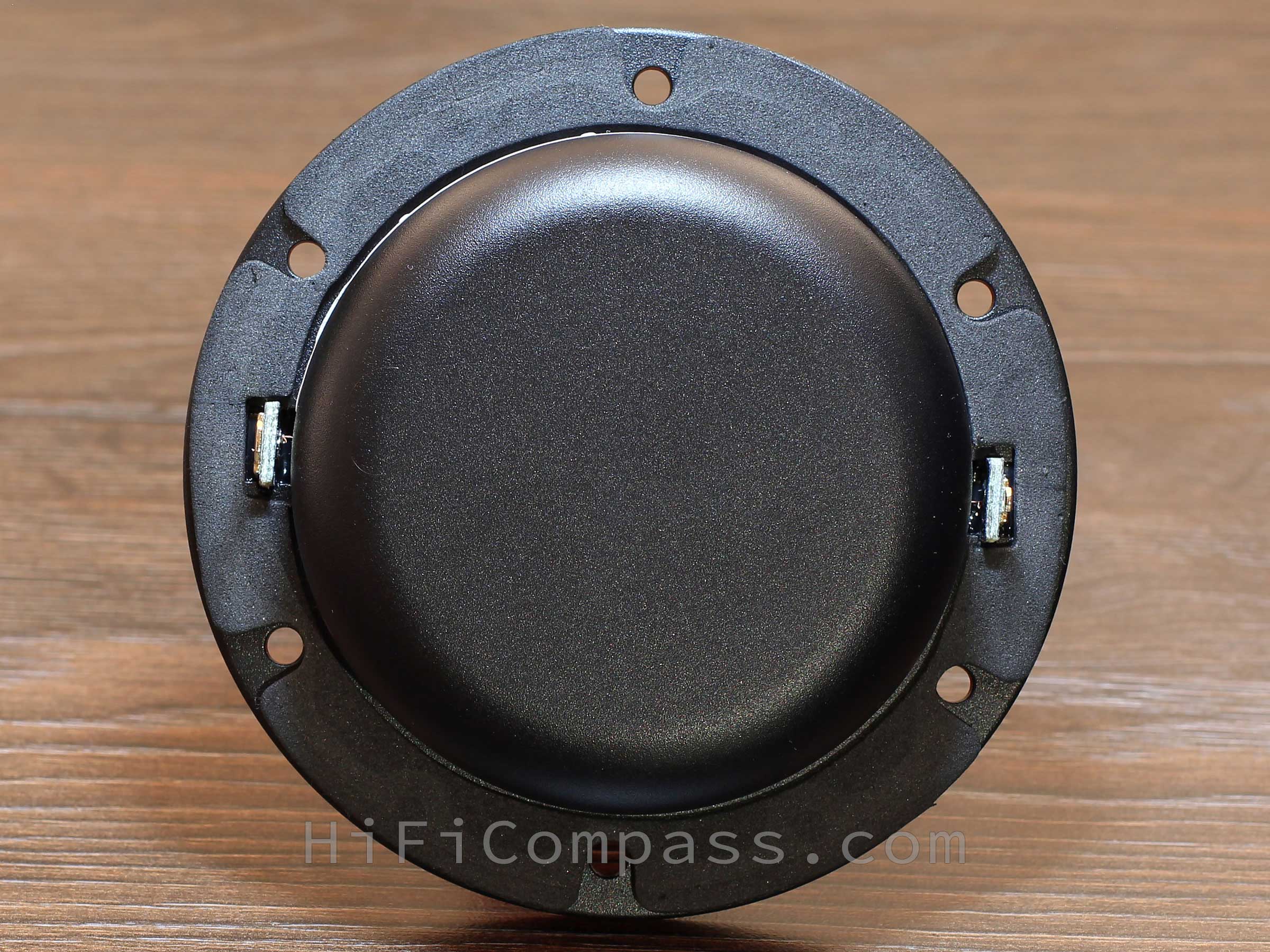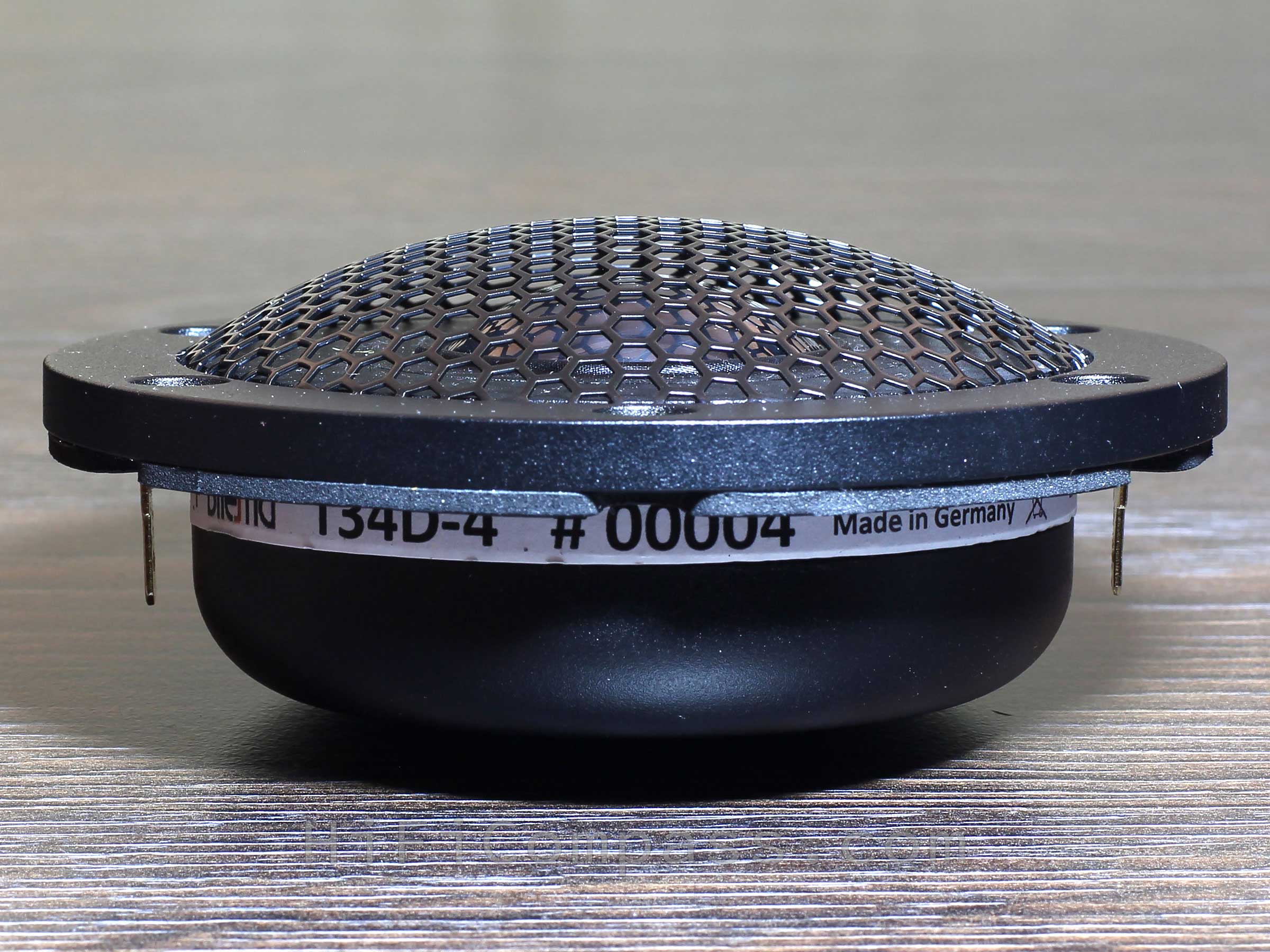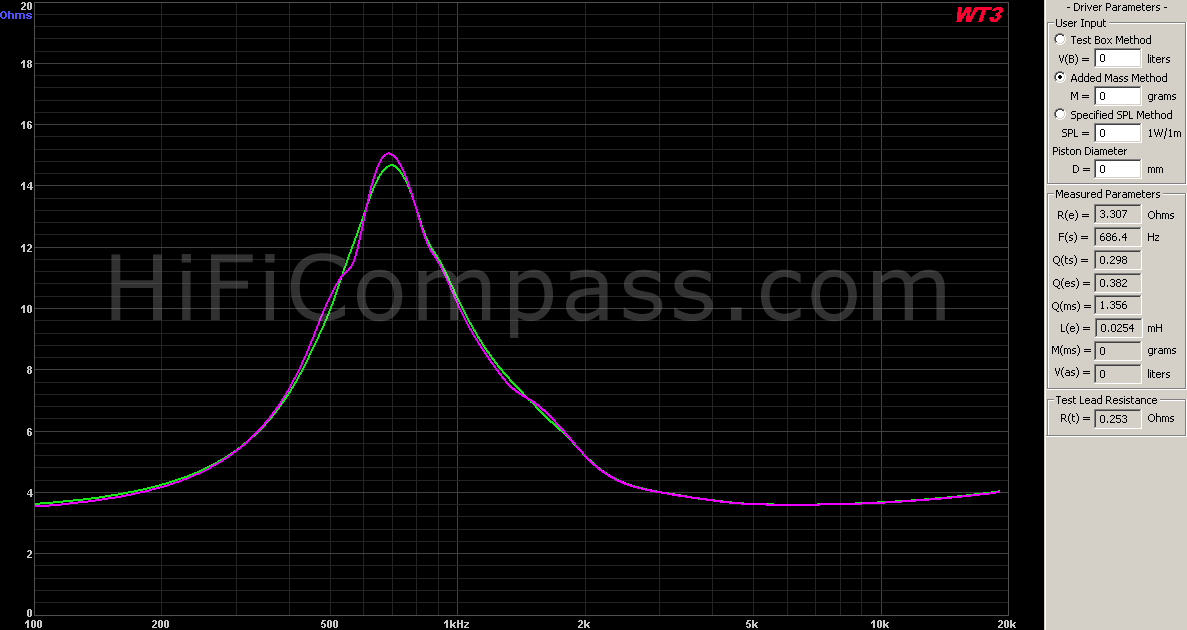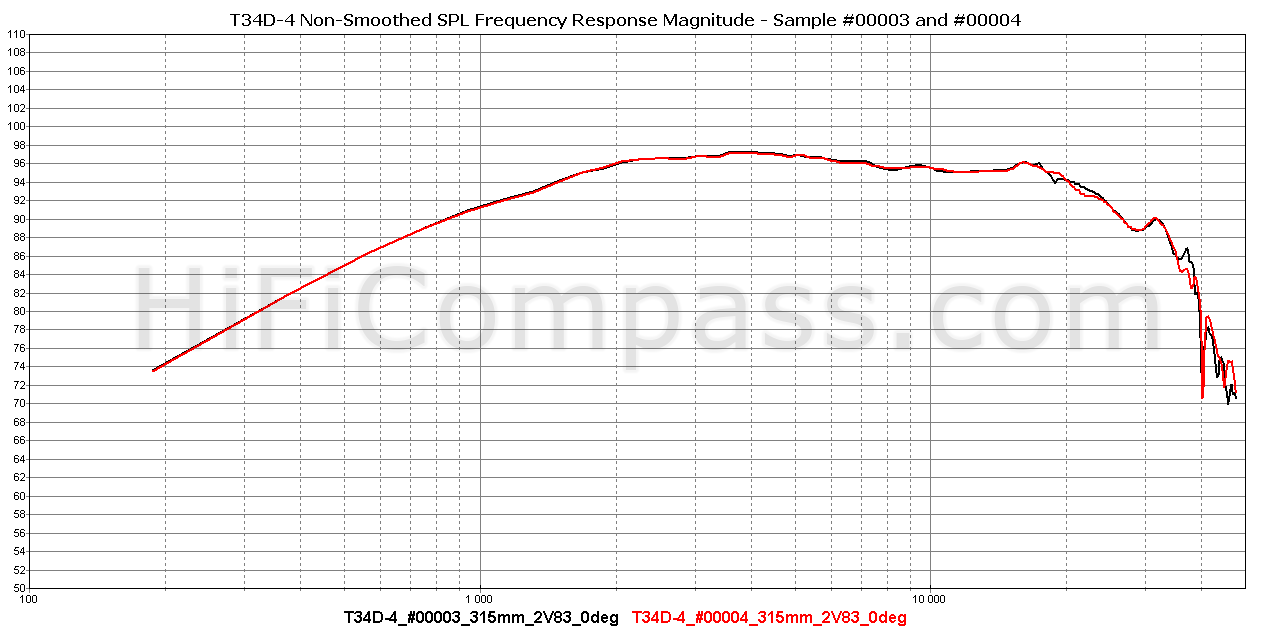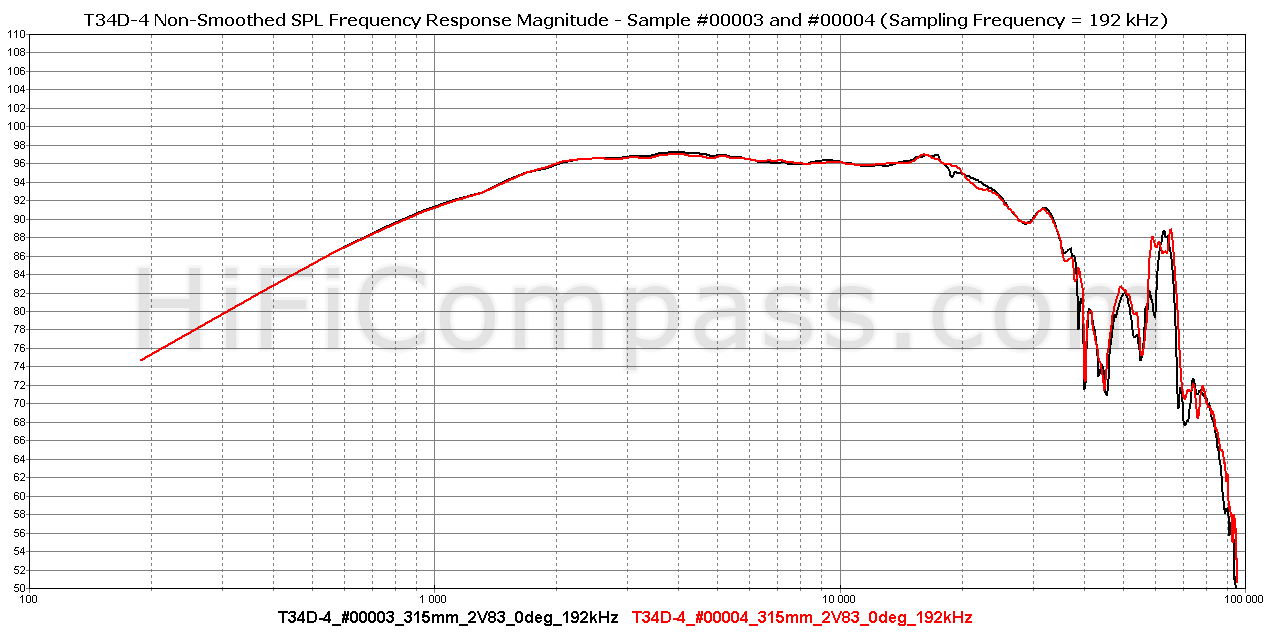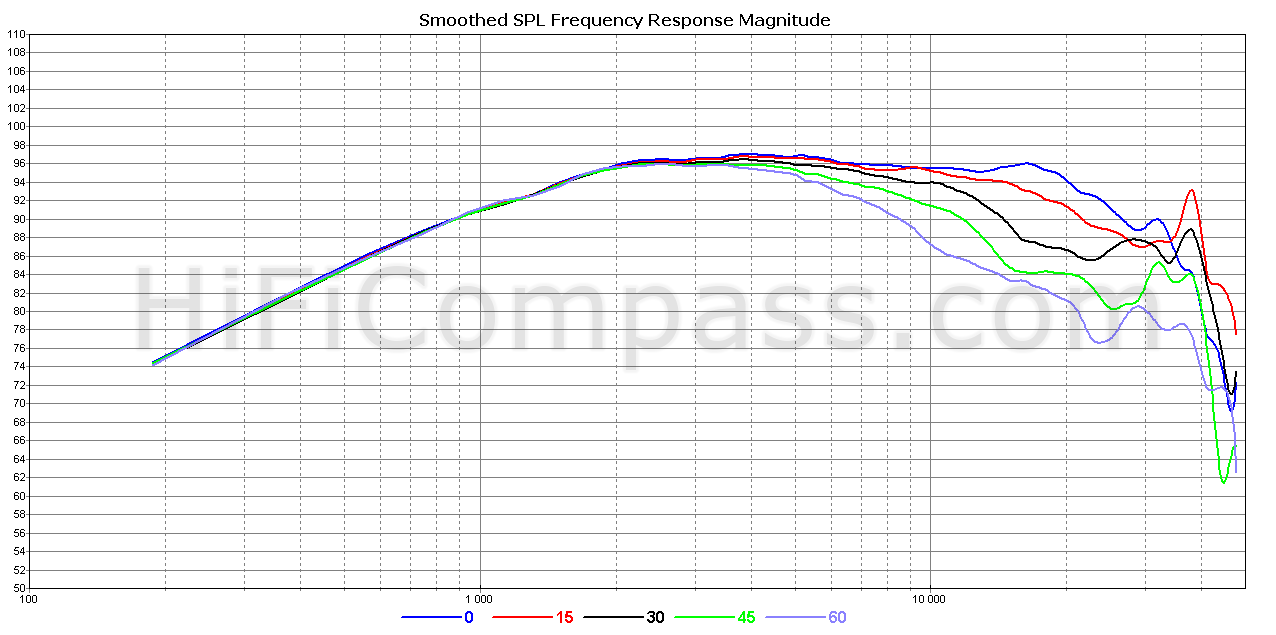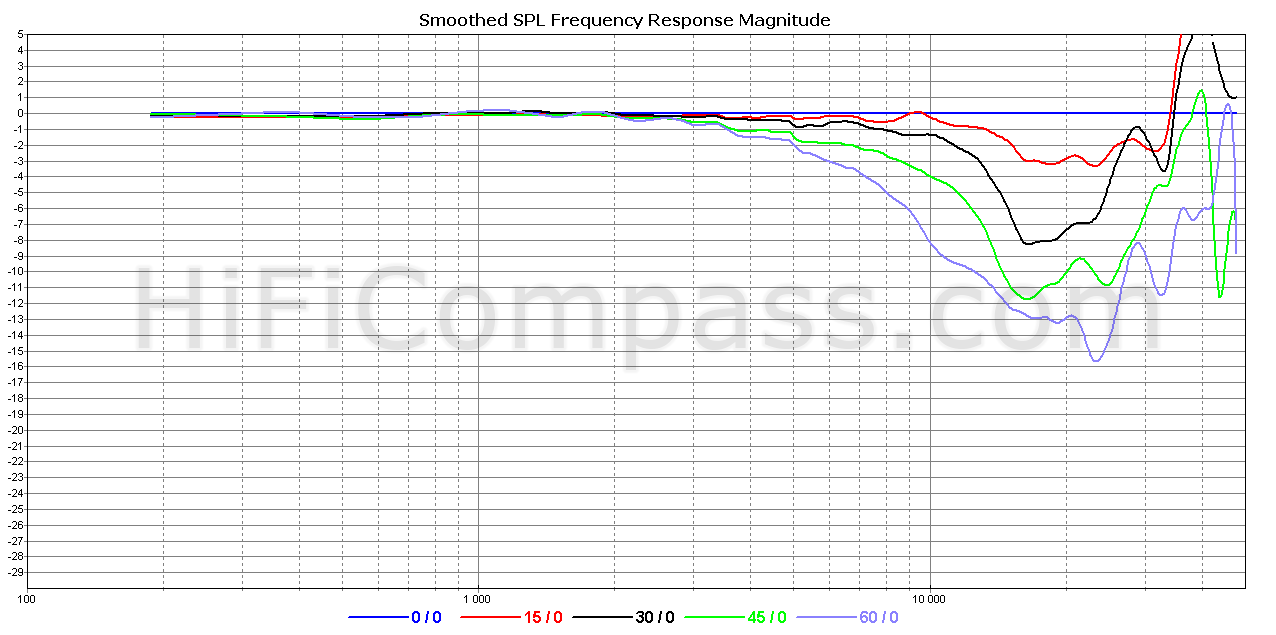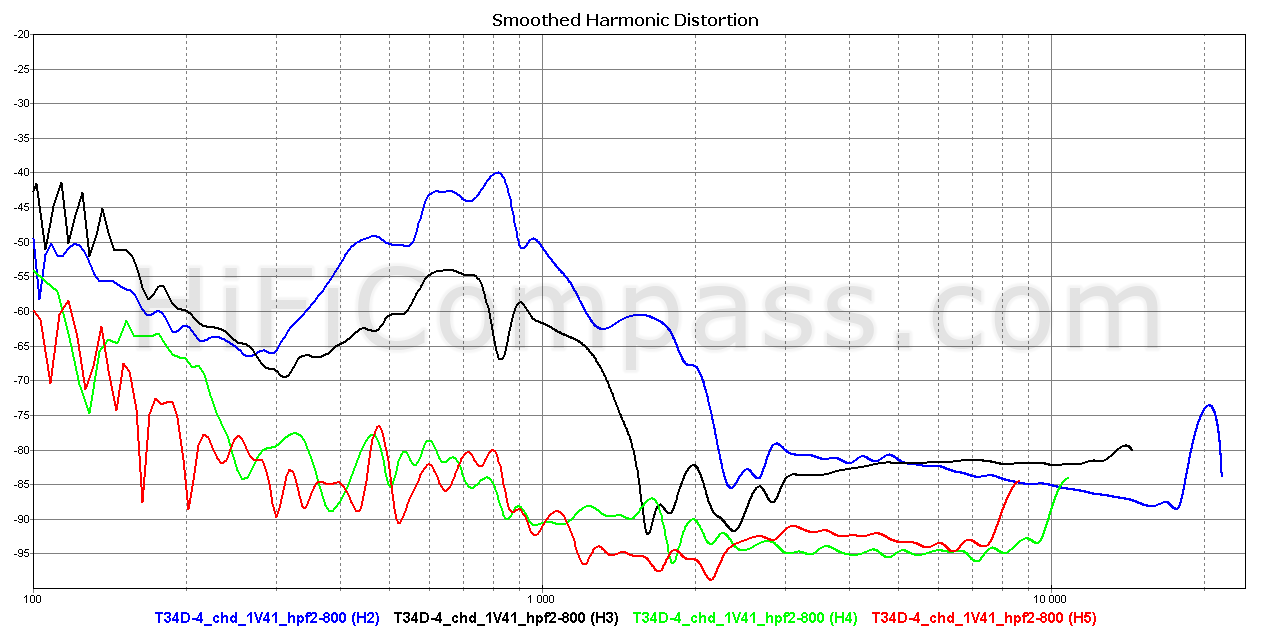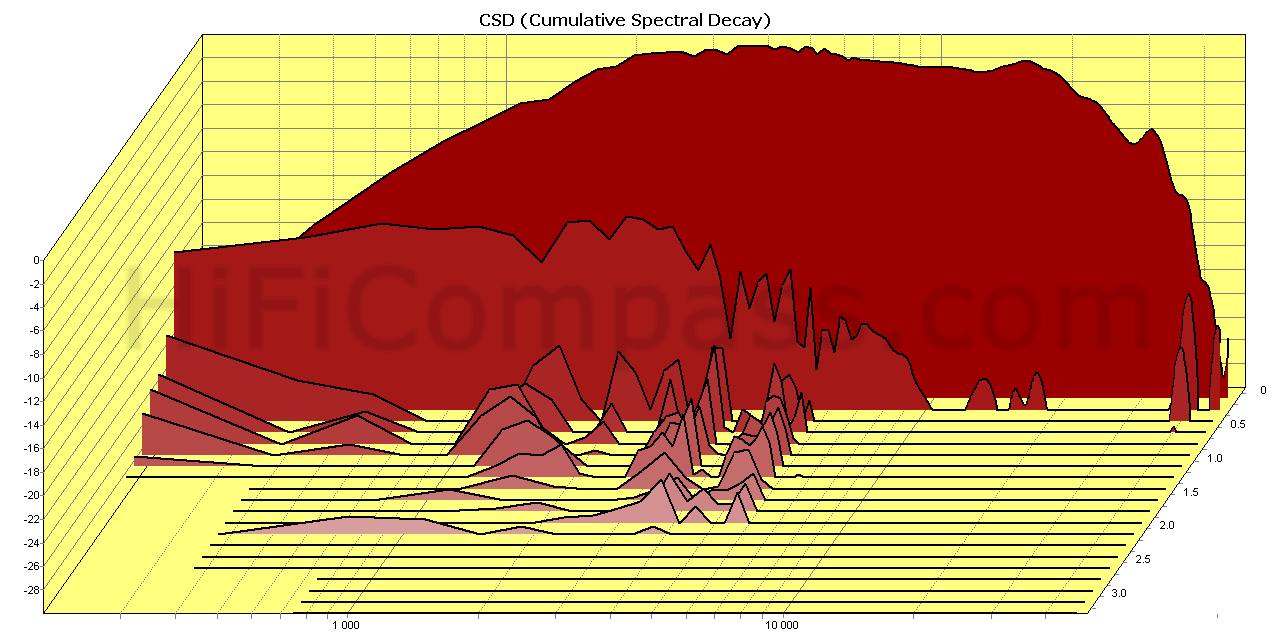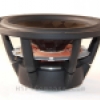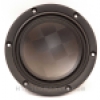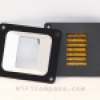HiFiCompass
BlieSMa T34D-4 34mm Diamond Dome tweeter review
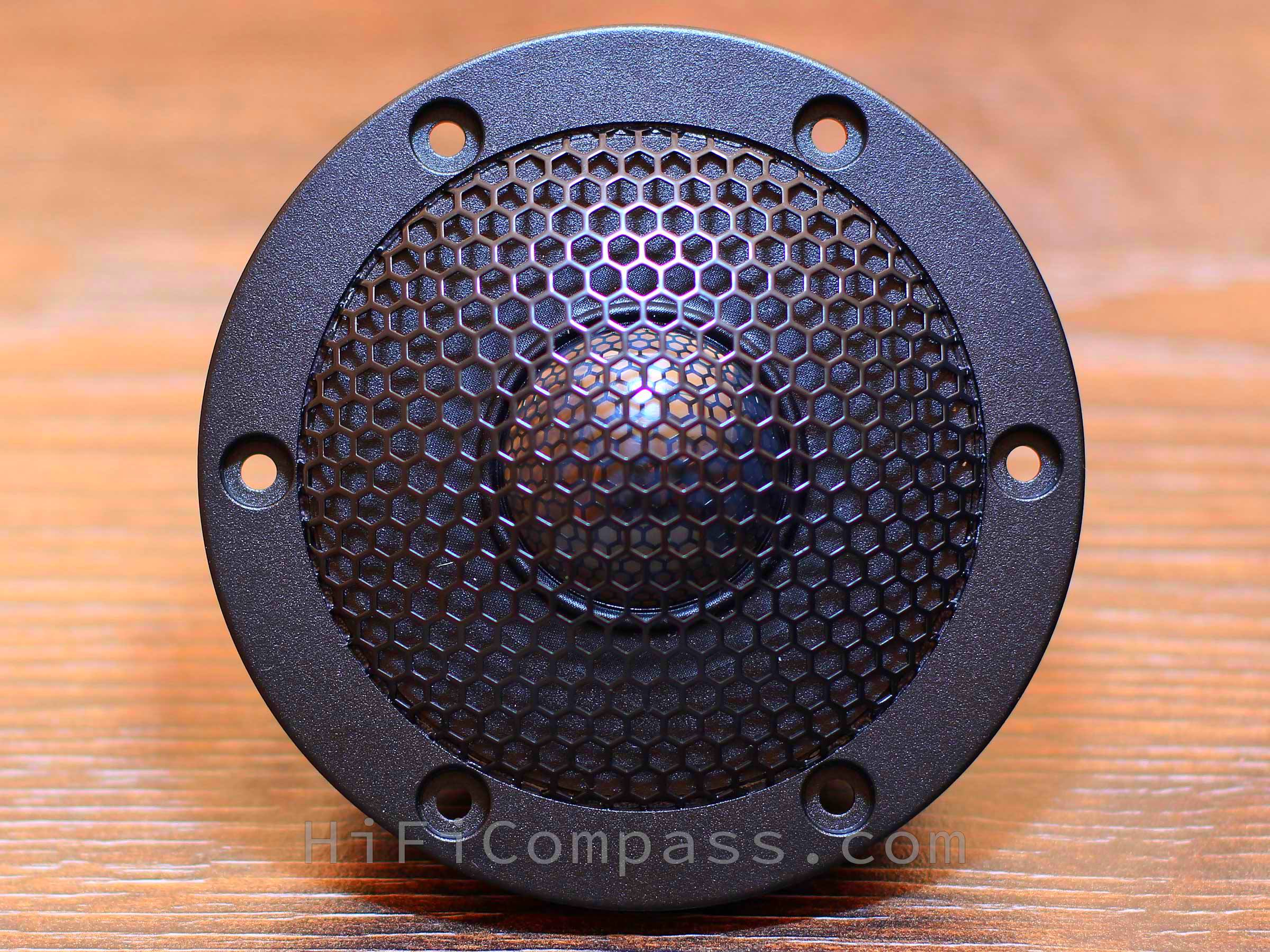
Diamond... I am sure that from early childhood each of us associates these seven letters with chic, high cost, unsurpassedness, uniqueness, magic and dream. Yes, yes, it is, this mineral, known to mankind for more than two thousand years, has a number of extraordinary properties that have given it such an image and widespread use in jewelry and industry. Among them are high optical dispersion, high transparency, unsurpassed thermal conductivity, hardness and Young's modulus, and the highest speed of sound propagation. For you and me, gentlemen audiophiles, it is this last property that is of particular interest, since it is this that creates the prerequisites for creating the most advanced diaphragms for speakers. However, despite its merits, the diamond has been making its way into the world of audio for a very long time. First, it found application as needles for pickup heads, then as various coatings on speaker diaphragms and parts of rubbing mechanisms, and only by the end of the XX century, thanks to the development of CVD technology of diamond synthesis, it became possible to create dome diamond diaphragms for commercial use.
In 1999, the German Institute for Applied Solid State Physics Fraunhofer IAF and the German company Thiel & Partner GmbH (Accuton branded products) joined forces, resulting in 2000 in the world's first commercial tweeter with a true diamond concave diaphragm with a diameter of 20 mm. Since then, diamond tweeters have seriously and permanently entered the most expensive niche of hi-end loudspeakers, and the Accuton lineup has been enriched with several models with 20, 25 and 30 mm concave diaphragms:
BD20-6(4)-031
BD25-6(4)-034
BD30-6(4)-036
In 2013, these diaphragms were “moved” to updated motors:
BD20-5-048
BD25-6-258
BD30-6-458
In parallel with the Germans, the British were also treading their diamond path. Bowers & Wilkins and Element Six worked together to develop the B&W 800D loudspeaker in 2005, the main highlight of which was a diamond tweeter with a convex 25mm diaphragm, which subsequently underwent several reincarnations:
ZZ14265 for 800 D line (2005)
ZZ14388 for 800 D2 line (2010)
ZZ28738 for 800 D3 line (2015)
ZZ37001 for 800 D4 line (2021)
A convex 25mm diaphragm tweeter from Danish company Jantzen Audio JDT-1024, which debuted in 2010 in the Marten Coltrane Momento loudspeakers (Sweden), was visible on the diamond horizon for a while.
In 2013, the Norwegian company SEAS released its T29D001 (E0100-04) diamond tweeter with a convex 26 mm diaphragm.
In 2021, the German company BlieSMa joined this small company, releasing a diamond dome tweeter with a convex 25 mm diaphragm T25D-6.
Here, in fact, is a brief background and the “diamond” menu that was available to manufacturers of ultimate loudspeakers from the advent of the first diamond tweeter until the end of 2023.
And finally, we come to the subject of today's review. In the fall of 2023, BlieSMa updated the range of "T34" series tweeters with the new T34D-4 tweeter with a convex dome 34 mm (!) diamond diaphragm. As you can see, it is currently the largest diamond tweeter in the world, a real "KOHINOOR", and, at the same time, the most expensive jewel in the crown of BlieSMa's unique tweeters.
I would like to express my great gratitude to Stanislav Malikov, the developer and owner of BlieSMa, for providing me with tweeter samples for testing.
Here you can get familiar with the BlieSMa history.
What did the manufacturer state?
The characteristics of the top segment category. We will go through the features because some of them really require of our explanation:
- 34mm CVD diamond dome with ultrasonic first breakup mode
- 34mm diamond dome - it is the largest among modern diamond dome tweeters in the world - Extremely low moving mass for better transient response and higher efficiency
- The moving mass of 0.32 grams is indeed extremely low for such a large dome and heavy material like diamond. Compare it with 0.45 grams for Accuton BD30-6-458 30mm diamond dome tweeter - Fully saturated neodymium motor with copper sleeve for very low non linear distortion
- Nowadays such a motors are not rare and can be found in many top segment tweeters. But there is one small detail - the induction in the magnetic gap is 2.2 Tesla! It is not just a rare phenomenon but an exclusive parameter. We think so, it is somewhere near the theoretically achievable limit and it says that the manufacturer has done something in technology to achieve this - 3mm linear excursion and large vent channel for undistorted low-end frequency operation
- 3mm is from peak to peak. The amplitude of 1.5mm is just a fantastic parameter - Narrow surround for less "soft dome" sound coloration
- The surround is really very narrow. Due to this fact the ratio of radiation areas of the dome to the fabric surround is very high, so that the contribution of soft surround to the overall nature of the sound is reduced - Flush mounted surround and rear mounted magnet system for flat frequency response and wide off-axis response
- Moving assembly flush mounted on the face plate doesn't affected neither by any additional waveguide-horn loading nor by reflections/bouncing between the tweeter dome and mounting flange itself. In this case the dome is mounted on top of a flat flange and looks from the outside just like a protruding segment of a sphere. According to the manufacturer, it contributes to a more even frequency response
- Rear mounted magnet system is very good. Removing screws heads from the front side of the flange reduces additional reflections and contributes to the smoother frequency response - No ferrofluid for improved dynamics - there is no ferrofluid in the magnet gap, which contributes to improved microdynamics
- Underhung voice coil wound on titanium former - the height of the voice coil is much smaller than the height of the magnetic gap, so the voice coil never extends beyond the magnetic gap during operation, contributing to a very low distortion level. Titanium voice coil former reduces parasitic braking due to Foucault currents compared with aluminium formers
- Flexible and lightweight lead wires made in Denmark
- Thick aluminium powder coated flange
- Aluminium rear chamber with natural wool damping
- Gold plated wire terminals
- It is hardly worth stopping on the last four points - Extremely wide recommended frequency range 1.3kHz - 40kHz
Of the numerical parameters it is worth noting high sensitivity – 96dB/2.83Volt, very low voice coil inductance - 0.008mH and low moving mass - 0.32 gram.
- The packaging is a sturdy package made of durable glossy corrugated cardboard. The tweeters are secured inside by cardboard inserts with shaped cutouts
- The quality of workmanship is top-notch. No traces of glue, scratches, dirt and dust, stains and dents on the diaphragm, chips, gaps and misalignments. Absolutely nothing to complain about
- The faceplate is solid 6 mm thick aluminum with six recessed mounting holes, which is covered with micro-textured black semi-matte powder coating. A soft foam rubber gasket is glued to the back of the faceplate
- The back cover is solid aluminum about two millimeters thick. It is covered with microtextured black semi-matte powder coating. When tapped with a finger, it is quite inert, but not deathly quiet
- The magnet is neodymium, very powerful. I have never seen a magnet of this size and strength in any other dome tweeter except the T34A-4 and T34B-4
- The surround is regular textile convex half-roll
- The convex dome diaphragm is made of synthetic diamond using the CVD method. Unlike the dark gray diamond diaphragm with a rough, grainy surface like the T25D-6 tweeter, the T34D-4 has a diaphragm surface that looks like a completely black mirror
- The thick gold-plated terminals are absolutely firmly glued into the faceplate with epoxy glue. From personal experience, I believe that these are the most reliable terminals I have seen in tweeters. They can withstand multiple soldering with a powerful soldering iron
- The protective grille is metal, with a smooth semi-matte powder coating and a high degree (apparently about 70%) of acoustic transparency. The grille is attracted to the faceplate by the magnetic field of the motor with such force that it does not need to be glued at all
In general, the tweeter looks very solid and weighty, the design is well thought out, and there are not the slightest complaints about the workmanship.
The graphs below show the frequency response of impedance for the two tweeters at different scales:
The impedance curves are in excellent agreement with each other. The measured values of the resonant frequency were Fs1=686 Hz and Fs2=696 Hz, which is even lower than the declared value of 710 Hz.
In the range above 2 kHz the curves are absolutely smooth as a baby's butt, there is not a single artifact or hint of any defect of the moving system.
The increase in impedance with increasing frequency is extremely low, which is due to the very low voice coil inductance (0.008 mH), achieved due to the small number of voice coil turns and the copper sleeve on the pole piece of the motor. This is a hallmark of a good motor and has a beneficial effect on reducing nonlinear distortions.
We can say that the frequency response of the impedance is close to ideal for a moving coil speaker, there is nothing more to say here.
On-axis frequency response (at 315 mm)
Below are the unsmoothed axial frequency responses of two tweeters, measured in a test baffle at a distance of 315 mm from the microphone:
The frequency responses of both specimens matches each other perfectly throughout the entire range. The measured sensitivity in the range from 1700 Hz to 18 kHz averaged 96 dB, which fully corresponds to the declared value. The frequency response is very even and smooth, in the same range the unevenness does not exceed +/- 1 dB.
Starting from 18 kHz, as befits true solid diaphragms, the frequency response begins to fall off smoothly and beautifully, while in the range up to 50 kHz no obvious diaphragm resonances are detected. Minor disturbances in the range of 30-40 kHz are not easy to explain, they clearly do not look like diaphragm resonance, maybe this is the influence of the textile surround, or maybe the protective grille.
The absence of resonance in such a large, rigid diaphragm up to 48 kHz greatly surprised me, since I expected to see it, well, at least the edge - alas, not the slightest hint. Curiosity made me increase the sound card's sampling frequency from 96 to 192 kHz in order to expand the observed frequency range from 48 to 96 kHz. Unfortunately, my measuring system is only calibrated up to 48 kHz, so I can't vouch for the exact behavior of the frequency response in the range of 48 - 96 kHz, but you can get a qualitative idea. Let's see what happened:
Wow! There is resonance, and it peaks at 62 kHz. If this is really the diaphragm's first breakup, it is very cool! How the manufacturer managed to achieve such a result from a 34-millimeter diaphragm, even a diamond one, I have no idea. I suspect that some kind of know-how was involved![]() .
.
Off-axis frequency responses (at 315 mm)
Below are diagrams of off-axis frequency responses - conventional and normalized, in which the axial response is taken as a reference, and the off-axis ones reflect only the difference with it:
Up to 23 kHz, the off-axis frequency responses decrease monotonically with deflection angle and frequency. In the 38 kHz region, at deflection angles of 15 and 30 degrees, there are small spikes in the frequency response. I can't relate them to anything specific. At a sound wavelength of only 9 millimeters, such phenomena may well be caused even by the specific design of the protective grille. In any case, these spikes are absolutely no cause for concern, but rather just something to talk about.
Overall, for a 34-millimeter diaphragm, the radiation pattern is quite wide, wider than many 1" tweeters.
Harmonic distortion (at 315 mm)
Above are the plots of 2nd to 5th harmonic distortion at voltages of 2 and 5.6 Volts, which corresponds to average sound pressure levels of 93 and 101 dB, respectively. This time, because of the high cost of the speakers, I didn't risk torturing them with higher voltage levels. The measurements were taken on-axis at a distance of 315 mm to the measuring microphone. To limit the tweeter overload in terms of power and amplitude of diaphragm displacement when measuring harmonic distortion, a second-order digital high-pass filter with a cutoff frequency of 800 Hz was used, therefore, in these plots we analyze the frequency range only from 800 Hz and above.
At any volume level, the exclusively euphonious second harmonic clearly dominates throughout the entire operating frequency range and its level is quite low.
Spikes of the 3rd, 4th and 5th harmonics are seen at 12 kHz, 9 kHz and 7.2 kHz respectively. This behavior is usually accompanied by a resonant peak in the frequency response, in this case the peak should be at 36 kHz, then the harmonics of the voice coil current will be amplified by this resonance and result in a similar pattern. However, in this case there is no spike at this frequency, and as the input signal level monotonically increases, the level of these harmonics, on the contrary, monotonically decreases. This is a bit strange behavior, and I can't find a suitable explanation for it.
As the frequency decreases, starting from about 3 kHz, there is an increase in all harmonics except the second one. I can't say they reach a critical level, but I would like to see lower distortion in this range, especially since the aluminum T34A-4 and beryllium T34B-4 tweeters, built on exactly the same platform, do better here.
Overall, I would rate the harmonic levels as "very low" above 3 kHz and "low" below 3 kHz.
Voice coil current harmonic distortion
This type of measurement, despite its simplicity, is an excellent tool for assessing the linearity of a speaker motor. The above plots show the frequency dependences of the 2nd, 3rd, 4th and 5th harmonics of the voice coil current at 1.41 and 5.6 Volt. To limit the speaker overload in terms of thermal power and diaphragm displacement when measuring harmonic distortion, a second-order Butterworth type high-pass filter with a cutoff frequency of 800 Hz was used.
Voice coil current nonlinearity is the direct nonlinearity of the mechanical force driving the speaker cone, since this force is related to the current by a simple relationship F=B*L*I, where B is the magnetic field strength, L is the length of the voice coil wire inside the magnetic gap and I is the current. So, in principle, it is practically impossible to obtain sound pressure distortion lower than current distortion in the frequency range where the contribution of the motional nonlinearity becomes insignificant.
The overall level of current harmonics of all orders is very low above 3 kHz. But below this frequency, the 2nd and 3rd harmonics start to grow noticeably, while the 4th and 5th harmonics, although growing, remain at a very low level.
The step response increases rapidly and quickly returns to rest. There are no oscillatory processes at all. It's just perfect, something you rarely see.
Waterfall is another way to investigate the linear response of a system, allowing us to better identify any hidden resonances that are difficult to discern in other types of measurements. In this case, no any problematic resonances were discovered. The waterfall is just perfect. The tails in the 3-5 kHz range are measurement artifacts and have nothing to do with tweeter behavior.
Let me start by saying that I have been familiar with the sound of diamond tweeters for many years. I had the opportunity to hear almost all diamond tweeters except the Jantzen Audio JDT-1024, and even worked very closely with several of them when designing loudspeakers. So, they all have one thing in common that is unique to diamond dome tweeters. Each person describes the sound and their sensations in their own way, but when it comes to describing the sound of diamond tweeters, many often have one common feature, which someone very aptly noticed - diamond tweeters sound as if there are no tweeters at all, but there is just clean, open, light, transparent and natural sound! I absolutely agree with this statement. In principle, this is where I could finish describing my impressions![]() .
.
In fact, the T34D-4 is no exception, still the same familiar signature, only due to the larger diaphragm and lower resonant frequency it sounds much more full and spacious than all the previous diamonds that I have heard. Very fast, transparent, very detailed, solid, but absolutely without harshness in sound. On the contrary, the timbre is rich, liquid, slightly oily and soft, which is very easy to hear on voices, wind and string instruments. Resolution and speed are on par with the best ribbon tweeters, but the physicality and energy in percussion instruments is noticeably better. Without exaggeration, when you listen to these tweeters in loudspeakers, you discover music from a completely different side, you hear something that you have never heard before, or rather, never noticed.
I can go on for a very long time, but there is no point. In fact, if you asked me which tweeter is the best in the world, I would be in a difficult position, since the “better-worse” category is purely subjective and everyone has their own ideas about it. But if, purely hypothetically, I had a one-way trip to Mars![]() and the tickets had already been purchased, and I needed to choose speakers to build loudspeakers on Mars (how could it be otherwise, I can’t live anywhere without music, even on Mars), then among all the tweeters I know, without hesitation, I would choose the T34D-4. Damn, it sounds a lot like an advertisement, but in fact I’m sincere. That's it, this is where I can end the description of my impressions with a pure heart
and the tickets had already been purchased, and I needed to choose speakers to build loudspeakers on Mars (how could it be otherwise, I can’t live anywhere without music, even on Mars), then among all the tweeters I know, without hesitation, I would choose the T34D-4. Damn, it sounds a lot like an advertisement, but in fact I’m sincere. That's it, this is where I can end the description of my impressions with a pure heart![]() .
.
One more important note. As you build your audio system, you always can make a diamond tweeter sound more like a soft tweeter, for example by using "soft" cables, paper-in-oil capacitors, tube amplifiers. But you can never make a soft tweeter sound much harder and transparent, like a diamond one.
The T34D-4 is very easy to use and is suitable for any highest quality two or three-way loudspeaker. An even and smooth frequency response will not create any problems when working with a crossover. You can apply a first- to second-order electrical filter with a cutoff frequency of 1.5 kHz or higher. Set the crossover frequency, level and slope of the frequency response throughout the entire tweeter's band to your taste and taking into account the radiation pattern of the midrange speaker![]() .
.
The T34D-4 is extremely well suitable for both molecular analysis of audio material and for long-term and comfortable listening to music of absolutely any genre.
What is the price and where to purchase it?
The retail price of the T34D-4 tweeter is approximately €3100/piece with no VAT included. Tweeters are sold only directly from the manufacturer.
We got acquainted with the next expansion of BlieSMa's "T34" line of tweeters. It is a beautiful tweeter with a convex 34 mm diamond dome diaphragm, the largest diaphragm among diamond tweeters to date. Excellent measurements, great sound. Highly recommended!
So, what can be noted:
- high sensitivity - 96 dB/2.83 Volt*1 m
- very large linear excursion - 1.5 mm per side
- titanium voice coil former
- 34 mm diamond dome diaphragm
- smooth frequency response with unevenness no more than +/-1 dB in the range of 1.7-18 kHz
- very low harmonic distortion above 3 kHz
- excellent workmanship
- lower limit frequency of application down to 1.5 kHz
You can get more information about the measurement results here
Yevgeniy Kozhushko/16.01.2024
CONTACTS
- Ukraine
- (+380) 95 904 7827
- hificompass@gmail.com
LAST NEWS
-
04 Mar 2025
-
25 Feb 2025
-
10 Feb 2025
-
01 Feb 2025
